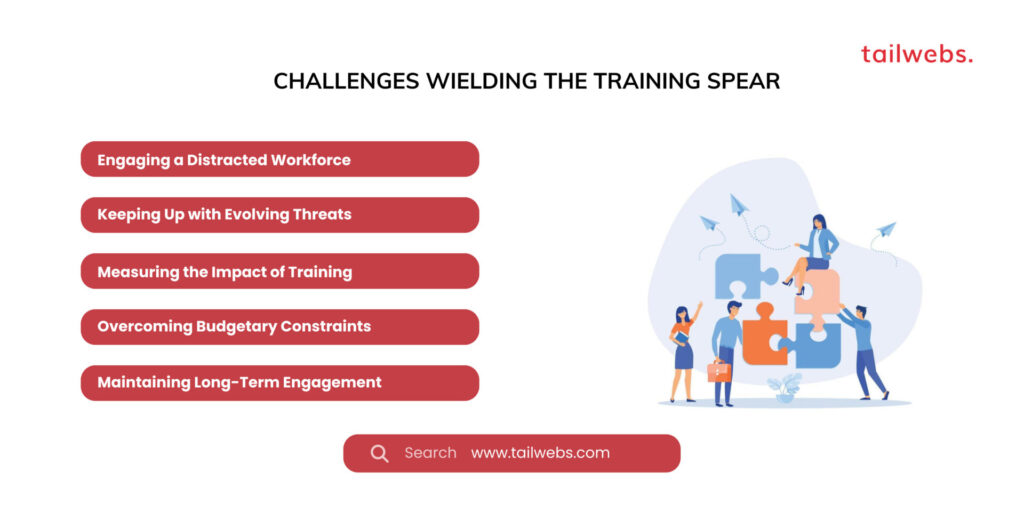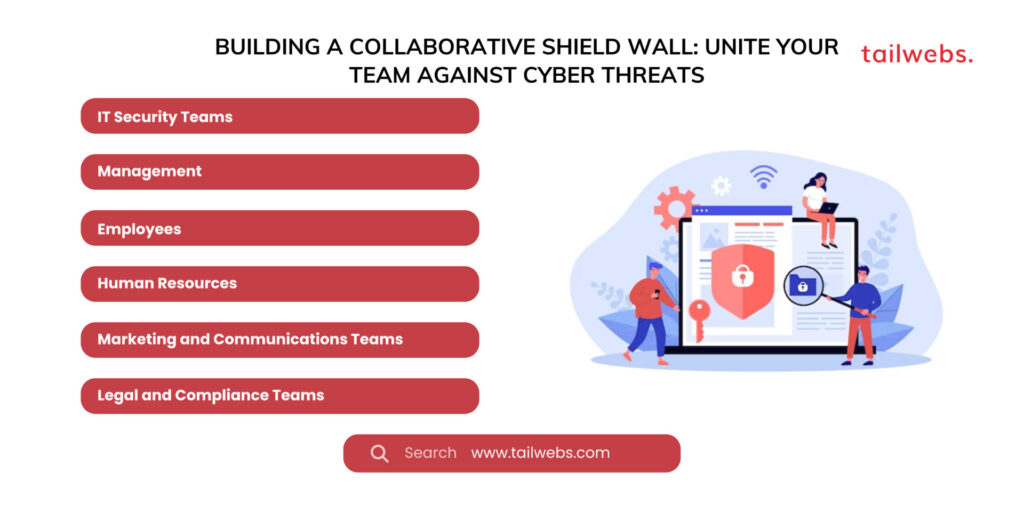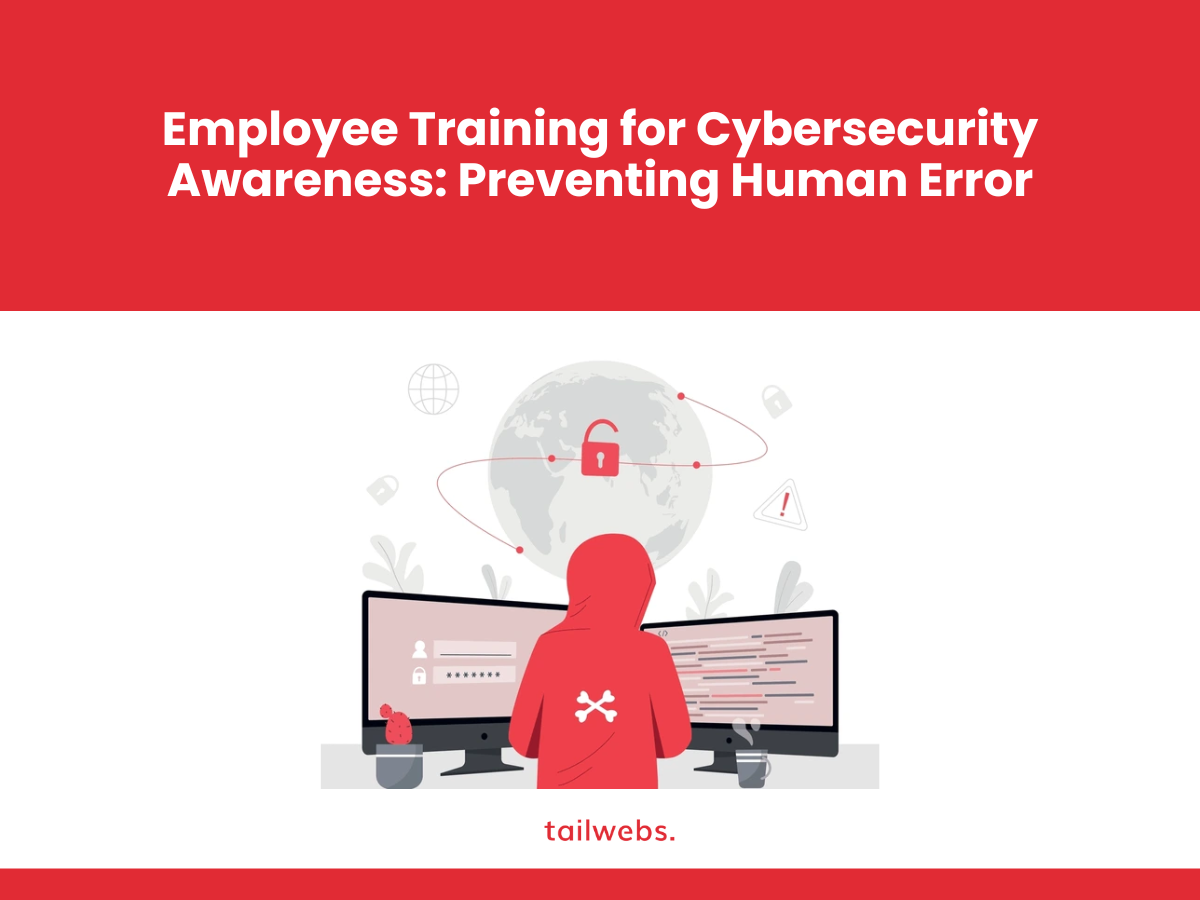Equipping Your Digital Knights: Empowering Employees with Cybersecurity Awareness Training
In the digital realm, human error acts as a chink in the armor, a potential gateway for cyberattacks that can cripple businesses and erode trust. But fear not, champions of cybersecurity! By empowering your employees with the knowledge and skills to identify and combat cyber threats, you can transform them from vulnerable targets into vigilant digital knights, safeguarding your organization’s data and reputation. So, embark on this noble quest of employee training, equipping your team with the essential tools of awareness to prevent human error from becoming a digital disaster.
Why Cybersecurity Awareness Training Matters:
Human Error, the Top Culprit:
Studies show that 95% of data breaches involve human error, making employee awareness crucial for bolstering your cybersecurity defenses. (Verizon, 2023 Data Breach Investigations Report)
Empowered Employees, Stronger Defense:
Educated employees can recognize phishing attempts, avoid suspicious links, and report potential breaches, becoming active participants in your security posture.
Phishing Floods Inboxes:
Deceptive emails, crafted to mimic legitimate sources, trick employees into revealing sensitive information or clicking malicious links, making training critical to mitigate this ever-present threat.
Data Breaches Cost Millions:
A single data breach can cost an average of $4.24 million, highlighting the financial imperative of preventing human-caused security incidents. (IBM Security, 2023)
Compliance Requirements:
Many data privacy regulations mandate employee training on data security best practices, making it a legal necessity for many businesses.

Stats Paint a Telling Picture:
- 74% of businesses have experienced at least one cyberattack in the past year. (Ponemon Institute, 2023)
- The global cybersecurity awareness training market is expected to reach $10.03 billion by 2027. (Statista, 2023)
- 88% of employees believe they have spotted a phishing attempt in the past year, but only 50% reported it. (KnowBe4, 2023 Phishing Report)
From Paper Shields to Digital Swords: Building a Training Arsenal
Identify Your Training Needs:
Conduct a risk assessment to understand your vulnerabilities and tailor your training accordingly. Prioritize topics like phishing awareness, password hygiene, and secure browsing practices.
Engage in Diverse Training Formats:
Utilize a variety of training methods like interactive modules, simulations, games, and in-person workshops to cater to different learning styles and keep employees engaged.
Practice Makes Perfect:
Conduct regular phishing simulations to test employee awareness and provide actionable feedback to improve their detection skills.
Make it Relevant and Relatable:
Use real-world examples and scenarios that resonate with your employees’ daily tasks and responsibilities to enhance their understanding and engagement.
Reward Positive Behavior:
Recognize and reward employees who demonstrate cybersecurity best practices and report suspicious activity to reinforce desired behaviors.
Tools and Techniques to Sharpen Your Training Arsenal:
Phishing Simulation Platforms:
Tools like KnowBe4 and Phished allow you to send simulated phishing emails to your employees and track their click-through rates and reporting habits.
Interactive Training Modules:
Platforms like Security Awareness Training by SANS and InfoSec Institute offer engaging courses and simulations on various cybersecurity topics.
Gamified Learning Platforms:
Tools like HackerOne and Elevate Security use gamification elements to make cybersecurity training more engaging and fun.
Microlearning Modules:
Platforms like LinkedIn Learning and Udemy offer short, bite-sized learning modules that fit easily into busy schedules.
Security Awareness Certification Programs:
Consider offering industry-recognized certifications like Security+ or Certified Ethical Hacker (CEH) to motivated employees to enhance their expertise.
Challenges Wielding the Training Spear:
Engaging a Distracted Workforce:
Competing priorities and information overload can make it challenging to capture employee attention and motivate them to engage in training.
Keeping Up with Evolving Threats:
The cyber threat landscape constantly evolves, requiring ongoing updates and revisions to your training content to stay relevant and effective.
Measuring the Impact of Training:
Quantifying the effectiveness of your training program can be challenging, but essential for demonstrating its value and making data-driven improvements.
Overcoming Budgetary Constraints:
Investing in comprehensive cybersecurity awareness training requires budget allocation, which can be difficult for some organizations.
Maintaining Long-Term Engagement:
Sustaining employee engagement and preventing complacency requires ongoing reinforcement and awareness campaigns.

Building a Collaborative Shield Wall: Unite Your Team Against Cyber Threats
Conquering these challenges requires a united front:
IT Security Teams:
Develop and deliver training content, conduct phishing simulations, and track training completion rates.
Management:
Champion cybersecurity awareness as a strategic priority, allocate resources for training, and lead by example in demonstrating secure practices.
Employees:
Actively participate in training, report suspicious activity, and follow security best practices to become active defenders.
Human Resources:
Integrate cybersecurity awareness training into onboarding processes, performance reviews, and company culture initiatives.
Marketing and Communications Teams:
Craft clear and concise messages about cybersecurity policies and procedures, and raise awareness through internal campaigns and newsletters.
Legal and Compliance Teams:
Ensure training programs align with data privacy regulations and internal security policies.

By working together and harnessing the power of collaboration, you can transform your employees from potential vulnerabilities into cybersecurity champions.
Here are some additional tips to ensure your collaborative quest for an aware and vigilant workforce is a resounding success:
Establish a Culture of Open Communication:
Encourage employees to ask questions, report concerns, and seek clarification on security policies without fear of reprisal.
Promote Peer-to-Peer Learning:
Encourage experienced employees to mentor and share their cybersecurity knowledge with colleagues.
Offer Ongoing Support and Resources:
Provide employees with easy access to information, support channels, and resources to reinforce their training and address any questions that arise.
Integrate Security into Daily Workflows:
Embed security practices into daily tasks and processes to make them second nature for all employees.
Celebrate Successes and Recognize Efforts:
Acknowledge and reward employees who demonstrate excellent cybersecurity practices and contribute to a more secure environment.
Remember, employee training for cybersecurity awareness is not a one-time event; it’s an ongoing journey of education, reinforcement, and collaboration. By equipping your employees with the knowledge and skills to identify and combat cyber threats, you can build a human firewall that stands strong against the ever-evolving threats of the digital world. So, raise the banner of cybersecurity awareness, unite your team, and embark on the noble quest to create a culture of vigilance and preparedness, securing your organization’s data and reputation from the ever-present dangers of the cyber landscape.





